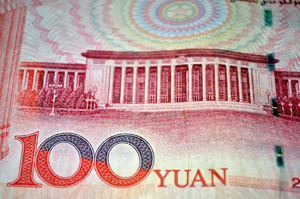 Financial cooperation and integration in East Asia has been languishing for almost a decade. But ASEAN, the People’s Republic of China (PRC), Japan, and the Republic of Korea (henceforth, Korea), or ASEAN+3, have been more successful in promoting free trade in East Asia by establishing a number of bilateral and plurilateral free trade agreements (FTAs) with countries in the region and outside the region.
Financial cooperation and integration in East Asia has been languishing for almost a decade. But ASEAN, the People’s Republic of China (PRC), Japan, and the Republic of Korea (henceforth, Korea), or ASEAN+3, have been more successful in promoting free trade in East Asia by establishing a number of bilateral and plurilateral free trade agreements (FTAs) with countries in the region and outside the region.
PRC efforts to internationalize the RMB
In this environment of free trade fervor, by virtue of its size and commanding share in intraregional trade, the PRC has been at the center of trade integration in East Asia. While negotiating FTAs with regional partners, the PRC has also been active in elevating its currency, the RMB, to a global and regional unit of account and medium of exchange. Since launching the program to internationalize1 the RMB in 2009, the PRC has made great strides in expanding its use for trade settlements in East Asia.
A country wishing to internationalize its currency needs to satisfy a set of pre-conditions including financial reform comprising currency convertibility, liberalization of financial markets, and deregulation of capital account transactions. The PRC was far from meeting these conditions in 2009. It was not prepared to embark on a sweeping financial reform, so the PRC chose first to promote the RMB for settling trade with its neighboring economies rather than internationalizing it.
The PRC has broadened the scope of the initial internationalizing program by removing several restrictions on capital account transactions and foreign investments in domestic financial assets to support the RMB’s internationalization.
If the PRC’s strategy proves viable, then other members of ASEAN+3, who are not ready to open their financial markets and relinquish control over the capital account, may find the path the PRC has taken presents a new—and perhaps more tenable—approach to allowing the use of their currencies for trade settlement. As a reserve currency country, Japan could play a critical role in setting up a workable currency system based on its experience with the yen internationalization.
The combined economy of ASEAN+3 equals that of the US in GDP terms and accounts for more than 25% of global trade. Yet the shares of the region’s two major currencies—the yen and the RMB—stood at 2.5% and 0.24% of total global trade payments in 2010 respectively, whereas their shares in total global trade stood at 5% and 11.4% in 2010 respectively (Auboin 2012). A cooperative scheme could expand the role of these two currencies and help internationalize other non-convertible currencies.
A multilateral currency system needs to be developed where national currencies are used for trade settlement in East Asia within the cooperative framework of ASEAN+3. The proposed system rests on a set of five multilateral agreements among the participating countries that include:
- Convertibility of national currencies of the participating countries received as export payments;
- Clearing mechanism: designation of clearing banks;
- Creation of interbank foreign exchange markets for direct trading in some of the members;
- Investment vehicles for exporters with non-national currencies received from their trading partners; and
- Adjustment mechanism for imbalances in currency flows between trade surplus and deficit countries.
The five agreements are key to the success of the system as they are designed to alleviate the constraints on the use of non-convertible currencies.
Conclusion
Such a currency scheme would mitigate the risks associated with attempts at internationalization in non-convertible currency countries. The system could also reduce excessive dependence on the US dollar, safeguard against financial spillovers originating outside the region, and deepen trade and financial integration in the region. Patterns and structures of trade and financial openness suggest that ASEAN+3 has established an economic base upon which it could launch such a system. Korea and ASEAN5 (Indonesia, Malaysia, Philippines, Thailand, Viet Nam) could emulate the PRC’s strategy of RMB internationalization.
_____
1 Internationalization of a currency is defined as a currency‘s use outside the issuer‘s borders, including for purchases of goods, services, and financial assets in transactions by nonresidents. It is essentially an organic, evolutionary, and market-driven process. Kenen 2011.
References:
Auboin, Marc. 2012. Use of Currencies in International Trade: Any Changes in the Picture? WTO Working Paper ERSD-2012-10. Geneva: World Trade Organization
Lee, Il Houng and Yung Chul Park. 2014. Use of National Currencies for Trade Settlement in East Asia: A Proposal. ADBI Working Paper Series No. 474. Tokyo: Asian Development Bank Institute.








Comments are closed.